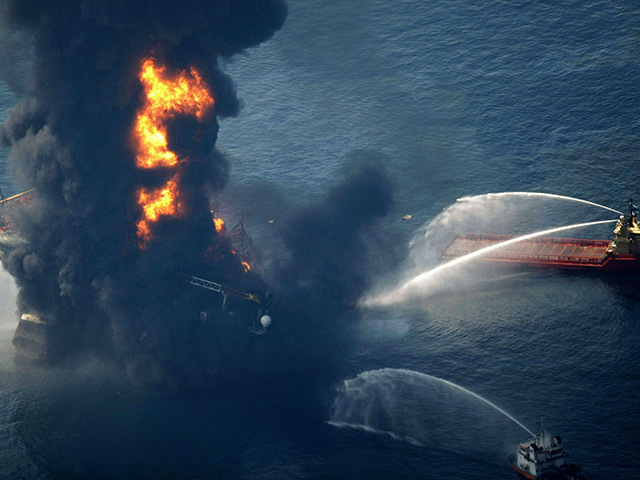
The highest-ranking BP Plc employee charged in the 2010 Gulf of Mexico spill denied lying to the US government over how fast oil was gushing out of the company’s doomed Macondo well.
David Rainey, BP’s former vice president of Gulf of Mexico exploration, was asked at trial Thursday if he “reverse engineered” his estimates to match a low initial government assessment.
“No, I did not,” Rainey replied.
Rainey is on trial on a charge of lying to investigators about the flow rate from the well.
US District Judge Judge Kurt D. Englehardt on Monday threw out the government’s second charge, that Rainey obstructed Congress.
Rainey wasn’t involved in the drilling of the BP well and wasn’t accused of any wrongdoing relating to the blast that set off the largest offshore US oil spill.
The US claimed Rainey cherry-picked information from flow-rate reports to make the oil spill seem less catastrophic than it was.
The US said Rainey estimated the flow rate at 5,000 barrels a day during the first weeks after the blast. The government claimed that some of BP’s own scientists suggested at the time the rate was significantly higher.
Rainey testified today that he developed his estimates in good faith, scurrying within days of the explosion to provide calculations for the rate.
He said he wasn’t aware of a government agency’s 5,000-barrel-a-day estimate when he began calculating his.
The low estimates had no effect on BP’s response to the spill, Rainey said. The company was committed to going all out to stop the disaster.
“The president had instructed us all to respond to the worst case scenario,” he said. “As if it was the worst case.”
He didn’t lie to the FBI as it investigated the spill, he testified.
“Did you tell the truth during that interview with the FBI?” his attorney, Bryan Heberlig, asked him.
“Yes, I did,” he replied.
Rainey said he wasn’t fired from BP over his estimates of the spill. He left because his age blocked him from future promotions at the company, he said.
The blowout of BP’s Macondo well in deep water off the coast of Louisiana in April 2010 killed 11 people and set off the spill.
BP earlier pleaded guilty for its part in underestimating its size. The company also paid $525 million to the US Securities and Exchange Commission, which alleged it downplayed the size to bolster stock prices.
The company also agreed to plead guilty to 11 counts of manslaughter for the deaths on the rig and two misdemeanor pollution law violations, paying a $4 billion criminal settlement.
It’s awaiting a separate court ruling on how much it owes in civil fines for violations of the U.S. Clean Water Act.
The government has asked U.S. District Judge Carl Barbier to fine the company at least $12 billion. BP says any fine should be much lower.
Rainey is one of four BP employees charged over aspects of the explosion aboard the Deepwater Horizon drilling rig and its aftermath.|
Two BP well-site managers charged with involuntary manslaughter face a trial in February. Engineer Kurt Mix was convicted in 2013 of destroying evidence.
His conviction was reversed and a new trial ordered. The government’s appeal is pending.
